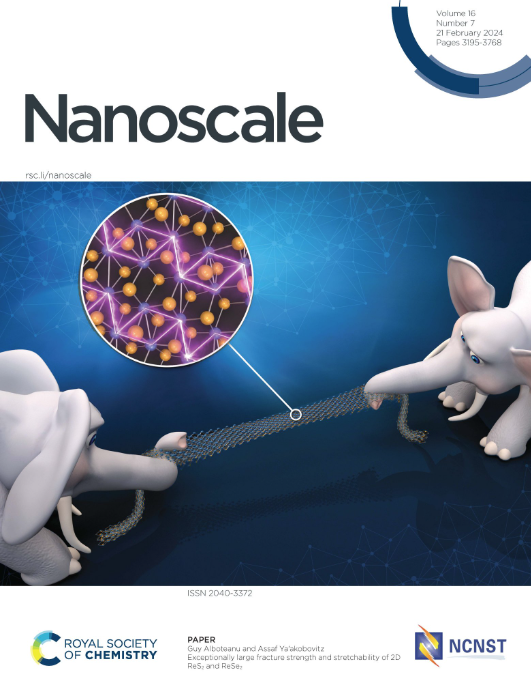二维材料基复合材料微波吸收的挑战与未来展望
IF 5.8
3区 材料科学
Q1 CHEMISTRY, MULTIDISCIPLINARY
引用次数: 0
摘要
电子设备的广泛使用不可避免地带来了电磁污染问题。因此,开发高效吸波材料来缓解日益严重的污染问题显得十分重要和紧迫。近年来,基于二维材料的微波吸收材料以其独特的片层结构、大比表面积、低密度、良好的热稳定性和化学稳定性在微波吸收领域引起了广泛的关注。通过结构配置、孔/缺陷工程、杂原子掺杂和耦合功能材料等多种调制策略,二维材料或二维材料基复合材料表现出优异的微波吸收性能。本文首先介绍了二维材料微波吸收体的吸收机理,然后对二维材料微波吸收体的最新研究进展进行了综述。最后讨论了石墨烯基、氢氮化硼基和甲基氙基微波吸收剂面临的挑战和未来的发展前景。本文旨在为在这一快速发展的领域中开发先进的多功能二维材料微波吸收剂提供指导或刺激。本文章由计算机程序翻译,如有差异,请以英文原文为准。
Challenges and Future Prospects of the 2D Material-based Composites for Microwave Absorption
The widespread use of electronic devices inevitably brings about the problem of electromagnetic pollution. As a result, it is important and urgent to develop efficient absorbing materials to alleviate the increasingly pollution issues. Recently, two-dimensional (2D) material-based microwave absorbers have attracted wide attention in microwave absorption due to their unique lamellar structure, large specific surface area, low density, good thermal and chemical stability. Through various modulation strategies such as structure configuration, pore/defect engineering, heteroatom doping and coupling functional materials, 2D materials or 2D material-based composites exhibit excellent microwave absorption performance. In this review, the absorption mechanism is firstly introduced and then the latest progress in 2D material-based microwave absorbers is profoundly reviewed. The challenges and future prospects for graphene, h-BN, and MXene-based microwave absorbers are discussed in the final part. This timely review aims to provide guidance or stimulation to develop advanced multifunctional 2D material-based microwave absorbers in this rapidly blossoming field.
求助全文
通过发布文献求助,成功后即可免费获取论文全文。
去求助
来源期刊

Nanoscale
CHEMISTRY, MULTIDISCIPLINARY-NANOSCIENCE & NANOTECHNOLOGY
CiteScore
12.10
自引率
3.00%
发文量
1628
审稿时长
1.6 months
期刊介绍:
Nanoscale is a high-impact international journal, publishing high-quality research across nanoscience and nanotechnology. Nanoscale publishes a full mix of research articles on experimental and theoretical work, including reviews, communications, and full papers.Highly interdisciplinary, this journal appeals to scientists, researchers and professionals interested in nanoscience and nanotechnology, quantum materials and quantum technology, including the areas of physics, chemistry, biology, medicine, materials, energy/environment, information technology, detection science, healthcare and drug discovery, and electronics.
 求助内容:
求助内容: 应助结果提醒方式:
应助结果提醒方式:


